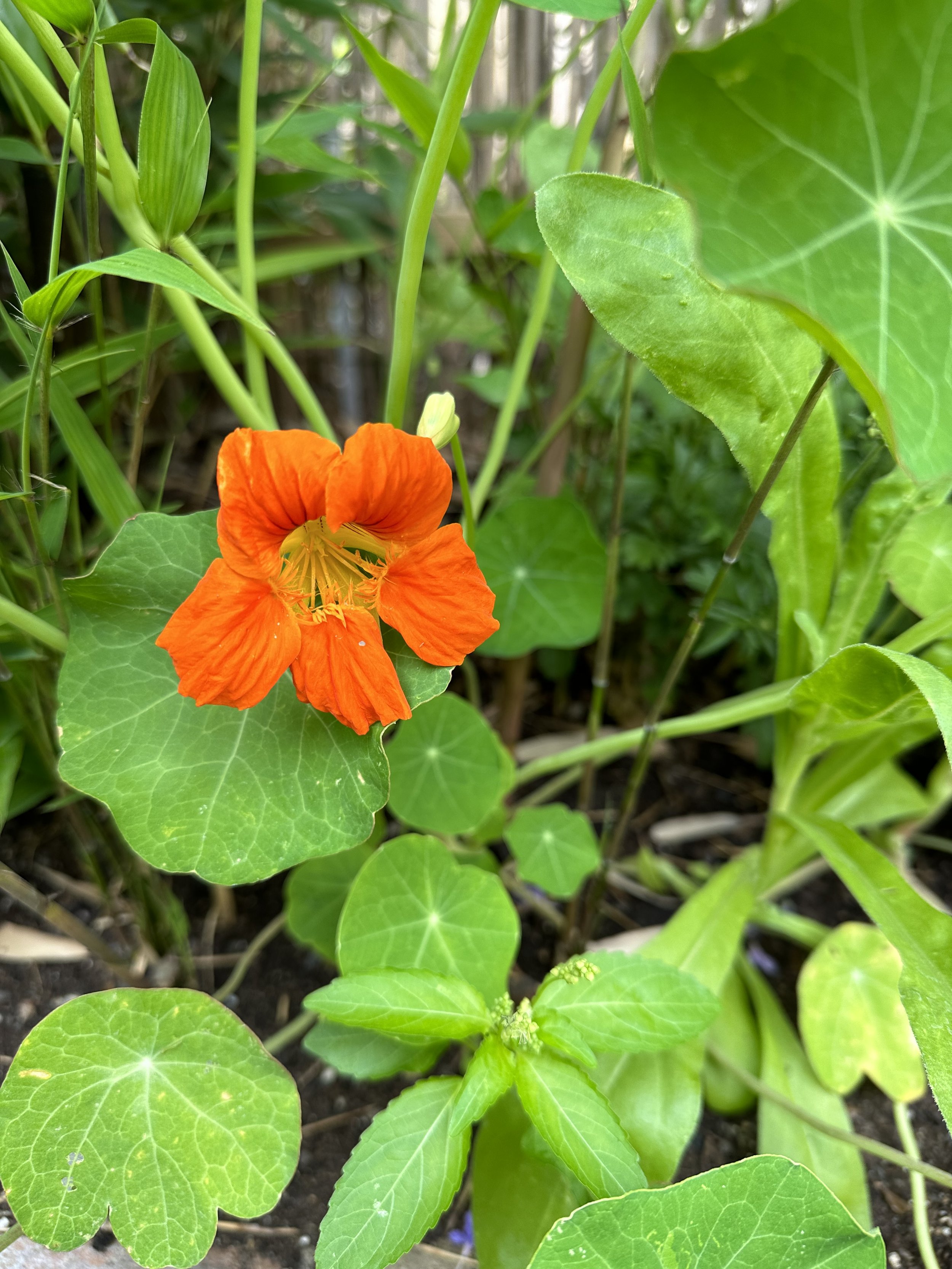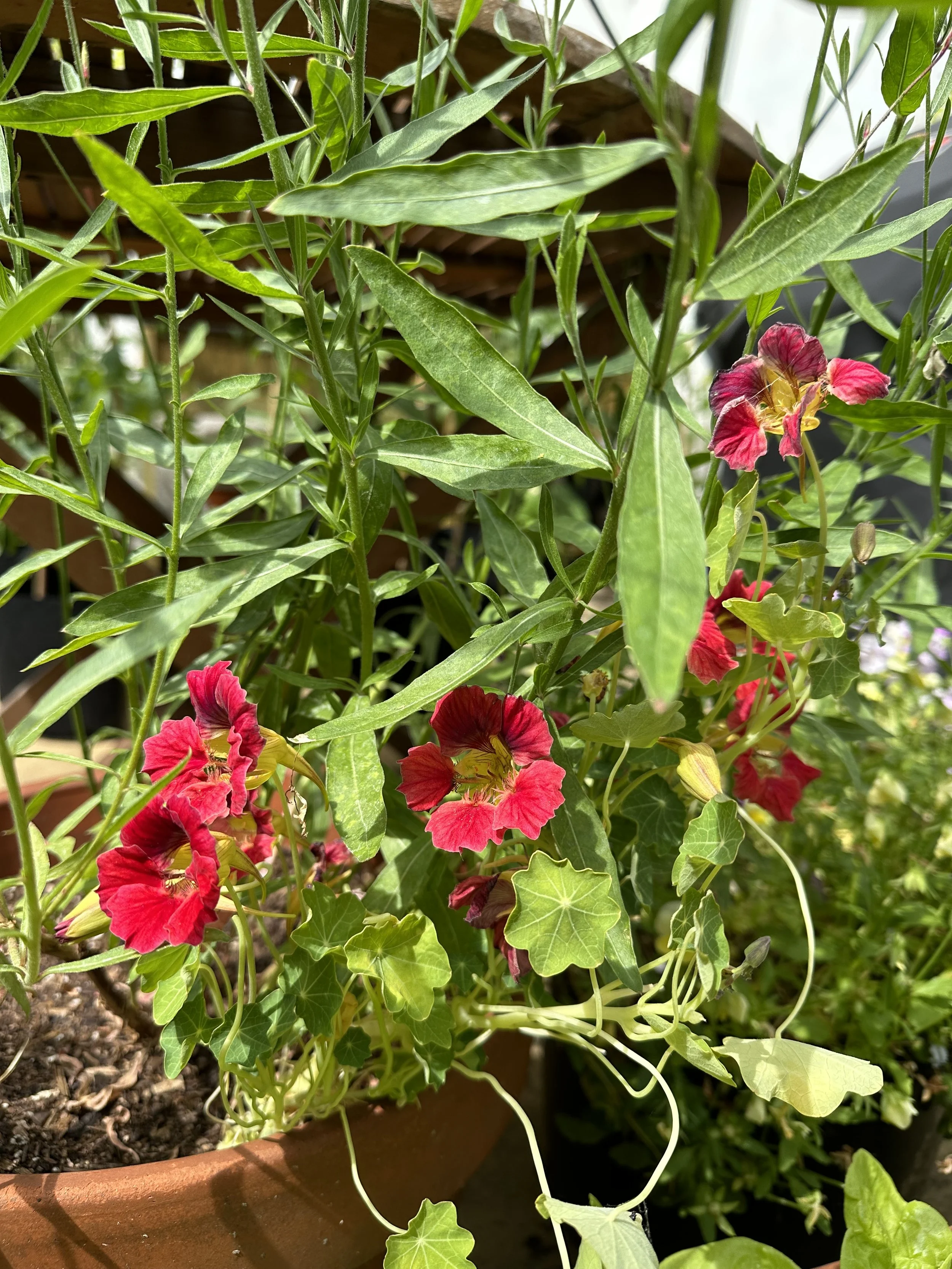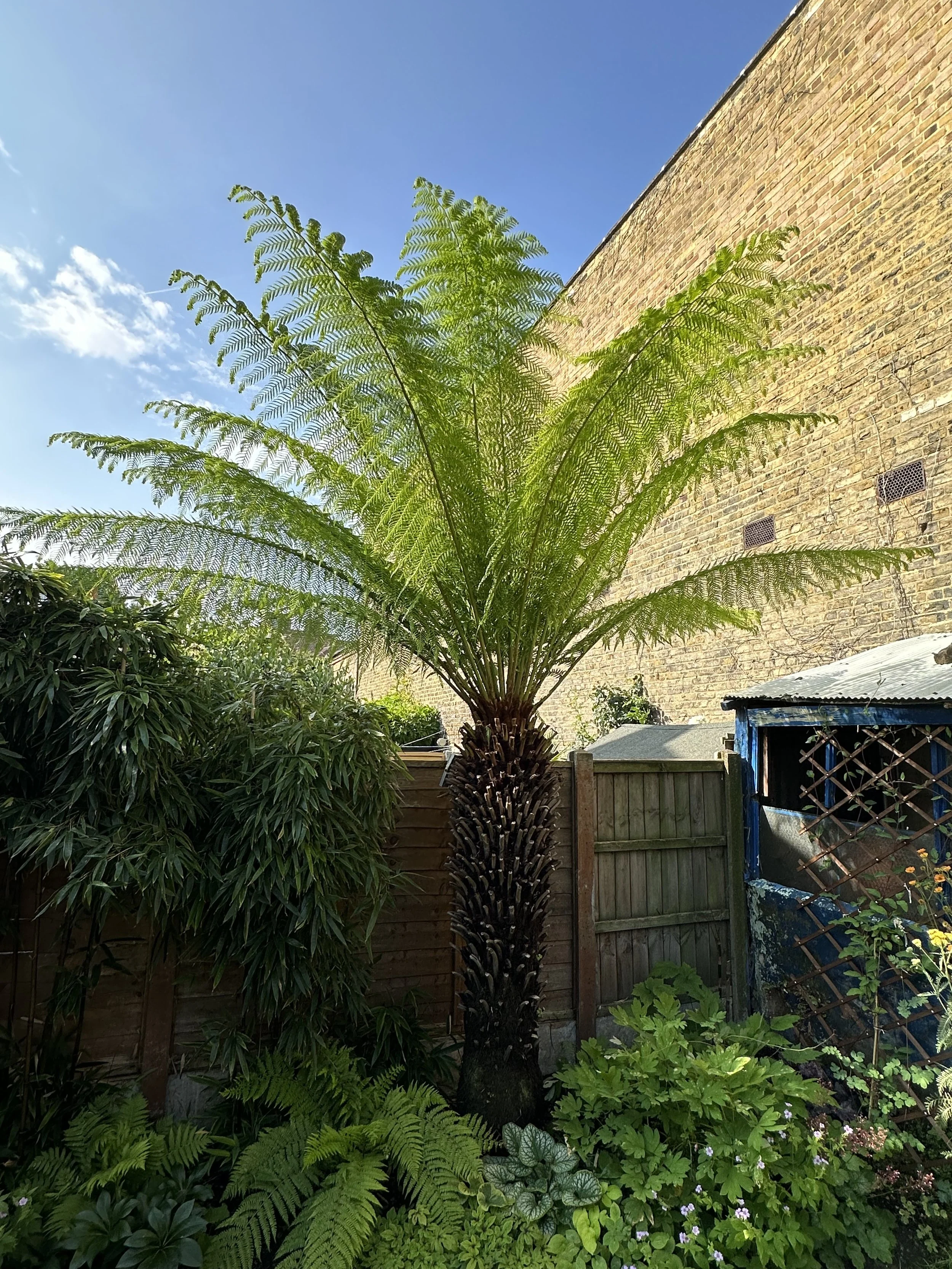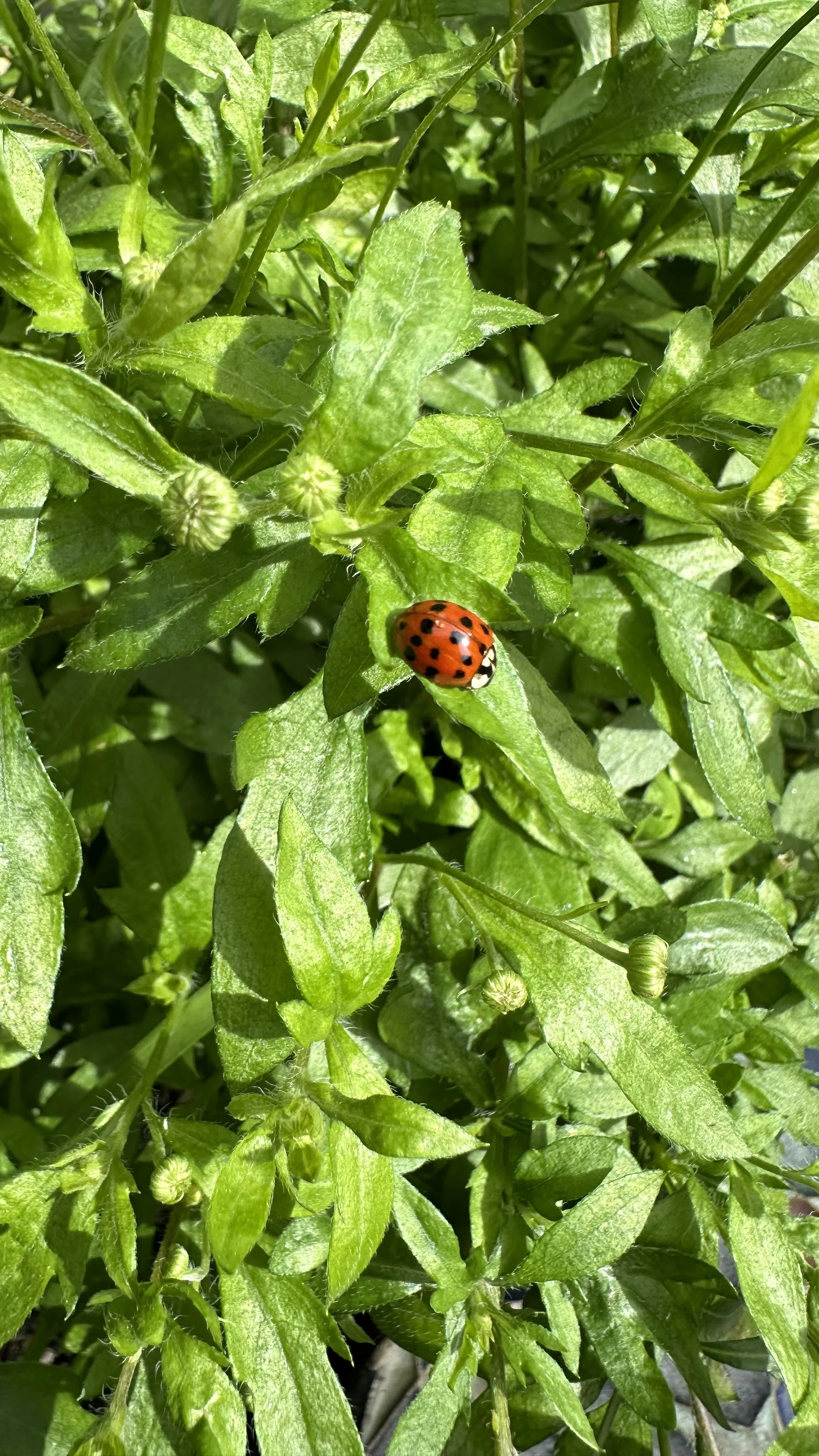Utilizing Nasturtium Companion Plants for Natural Pest Control
This article has links to products that I may make commission from.
Nothing brings a sense of vibrancy and utility to the garden like nasturtiums, the ultimate companion plants.
Whether you're planting in a vegetable garden, amid fruit trees, or even hanging baskets, these colorful flowers not only add aesthetic value but also provide an organic approach to pest control.
So, let's take a closer look at why nasturtiums deserve a dedicated spot in your garden and how to grow them.
Nasturtiums offer an incredible range of benefits when incorporated into your garden.
As nasturtium companion plants, they co-exist harmoniously with other plants, boosting their health and productivity.
Their bright flowers and foliage can attract beneficial insects, promoting pollination and a balanced ecosystem.
Moreover, their unique ability to thrive in poor soil conditions makes them an easy-to-maintain addition to your gardening routine.
To learn more about nasturtiums, check out my guide:
To learn more about using flowers as companion plants, check out my guides:
Planting Nasturtium in Vegetable Gardens and Fruit Trees
For vegetable gardeners, the concept of companion planting can be a game-changer.
Nasturtium companion planting works particularly well with several vegetables, including Brussels sprouts, cabbage, and beans.
They are also great companions for squash, acting as a trap crop for pests like squash bugs and cucumber beetles. Planting nasturtium seeds under fruit trees is another great strategy.
Their broad leaves cover the ground, acting as a natural mulch that retains moisture and suppresses weed growth.
And remember, nasturtiums attract beneficial insects, including ones that prey on pests threatening your precious fruit trees.
Here's a more detailed look:
Nasturtiums in Vegetable Gardens
Nasturtiums can be planted with a variety of vegetables.
They have a distinct ability to repel a multitude of pests that commonly plague vegetable crops, making them an invaluable addition to your vegetable garden.
Remember, nasturtiums can grow well in poor soil, which means they won't compete with your vegetable crops for nutrients.
The flowers are especially effective against cucumber beetles and various squash pests.
Planting them as companions can help reduce pest populations without the use of chemical pesticides.
Here are the cucumbers I recommend growing:
Nasturtiums Around Fruit Trees
Fruit trees can also benefit from having nasturtiums planted around their base. However, it's crucial to consider the growth habits of your fruit trees and nasturtiums.
If your trees need a lot of space, compact or trailing nasturtium varieties that don't climb aggressively would be ideal.
When planting nasturtiums, they should be sowed directly where they are to grow, as they don't transplant well due to their delicate roots.
They can be sowed anytime from early spring to early summer and prefer a sunny spot, although they can also tolerate partial shade.
Water them regularly, but be careful not to overwater, as nasturtiums are fairly drought-tolerant.
Ground Cover:
Nasturtiums spread rapidly and can serve as an effective ground cover.
Their dense foliage can help maintain soil moisture, suppress weed growth, and provide a cool root environment for your fruit trees.
Attracting Beneficial Insects:
Nasturtiums attract beneficial insects like ladybugs, lacewings, and hoverflies, which help control pests that could harm your fruit trees.
Pest Deterrent:
Nasturtiums can deter a variety of pests such as aphids, borers, and leafhoppers, keeping your fruit trees safe.
From companion planting in the vegetable garden to acting as a beneficial ground cover for fruit trees, nasturtiums have a role to play in many corners of the garden.
Their easy care, combined with their pest-repelling abilities, makes them a valuable addition to any garden.
Here are my favorite nasturtium seeds to grow:
Where to Plant Nasturtium in the Vegetable Garden?
When planting nasturtium in your vegetable garden, consider the plant's light and space requirements.
Nasturtiums can grow in full sun to partial shade.
However, if you're growing nasturtiums in hotter climates, a spot with afternoon shade will help them thrive. As for nasturtium spacing, give each plant about 10 to 12 inches of room.
This allows the plants to spread out and cover the ground effectively.
Sunlight Requirements:
Nasturtiums prefer full sun to partial shade.
If you live in a hot climate, select a location where they can get some relief from the intense afternoon sun.
Morning sunlight and afternoon shade would be the ideal condition.
Spacing:
As nasturtiums can become quite bushy and spread out, they need sufficient space to grow.
Typically, nasturtium seeds should be planted about 10 to 12 inches apart.
This allows each plant enough room to spread out and cover the ground without crowding neighboring plants.
Soil Conditions:
Nasturtiums aren't picky about soil and can tolerate poor soil conditions.
However, they prefer well-draining soil.
If your vegetable garden has soil that retains a lot of water, consider improving drainage before planting nasturtiums to prevent root rot.
Location in the Garden:
Nasturtiums work well when planted alongside or in between rows of vegetables.
As they are excellent at attracting beneficial insects and repelling harmful ones, placing them nearby vulnerable crops can provide natural pest control.
They're particularly effective when planted near squash, cucumbers, cabbages, and beans, but they should be avoided near broccoli and cauliflower due to allelopathy.
Elevation:
Nasturtiums can be planted at the base of taller plants where they can enjoy some shade during the hottest part of the day.
They also make an excellent border plant, creating a colorful edge to your vegetable garden that can deter pests.
Incorporating in Crop Rotation:
Since nasturtiums have a positive impact on soil health and help in pest management, consider incorporating them in your crop rotation plan.
They can be planted after heavy-feeding plants to restore the balance of the soil.
Remember, nasturtiums are not only functional, but they're also beautiful.
Adding them to your vegetable garden can enhance the overall visual appeal and create a pleasing atmosphere while you tend to your crops.
So consider your garden's aesthetic while deciding where to plant nasturtiums.
For more growing tips, check out my guides:
Nasturtiums in Hanging Baskets and With Herbs
What to plant with nasturtiums in hanging baskets?
Their trailing varieties make a vibrant display when combined with herbs like parsley and chives, creating a blend of edible flowers and greens.
However, be cautious about the nasturtium bad companion plants.
For example, planting nasturtiums with onions is generally discouraged due to their incompatible growth patterns and needs.
Here are a few insights:
Nasturtiums in Hanging Baskets:
Nasturtiums are ideal for hanging baskets because of their trailing varieties, which cascade beautifully over the sides. The vibrant flowers and lush green leaves can create a stunning display for patios, balconies, or front porches. When planting nasturtiums in hanging baskets, here are a few points to remember:
Choosing the Right Variety:
Varieties like "Jewel Mix" or "Trailing Nasturtium" are perfect for hanging baskets due to their cascading growth habit.
These varieties produce a profusion of bright, cheerful flowers that will spill over the edge of your hanging basket.
Light and Water Requirements:
Position your hanging basket in a spot that receives full sun to partial shade. Water regularly, but be cautious not to overwater.
Nasturtiums can tolerate some drought and don't do well with waterlogged soil.
Planting Procedure:
Plant the nasturtium seeds directly into the basket after the risk of frost has passed.
The seeds should be sowed about an inch deep and about 10 inches apart to give them room to grow.
Nasturtiums with Herbs:
Planting nasturtiums with herbs can bring multiple benefits.
They can attract beneficial insects that aid in pollination, enhancing the productivity of your herb plants.
Here are some suggestions:
Companion Herbs:
Nasturtiums pair well with many herbs, including parsley and chives.
These herbs can be planted in the same hanging basket or container for a delightful blend of foliage and flowers.
Herbs to Avoid:
However, not all herbs make good companions for nasturtiums.
Avoid planting nasturtiums with rosemary or sage. These herbs prefer a drier soil, while nasturtiums need more regular watering.
Whether you're growing nasturtiums in hanging baskets or alongside herbs, these vibrant and beneficial plants can add color and vibrancy to your garden or patio space while also providing functional benefits.
Their pest-deterrent properties and attraction of beneficial insects make them a worthwhile addition to any home garden.
The Role of Nasturtiums in Pest Control
A significant benefit of nasturtium plants lies in their capacity for pest control.
Their pest management roles are multifaceted, ranging from direct deterrence to acting as a 'trap crop'.
Let's delve deeper into how they can help:
Aphid Control
Nasturtiums are well known for their ability to attract aphids.
While it might sound counterproductive to invite pests into your garden, the idea is that the aphids will be drawn to the nasturtiums and away from your other plants.
This makes nasturtiums an excellent 'trap crop'.
Once the aphids have gathered on the nasturtiums, you can remove and destroy the affected plants or treat them specifically for aphids, reducing the overall aphid population in your garden without harming other crops.
Repelling Other Pests
In addition to attracting aphids, nasturtiums are also believed to deter a range of other pests.
These include whiteflies, squash bugs, cucumber beetles, and several types of caterpillars.
The strong scent of nasturtiums can act as a repellent, making them a useful plant to position next to crops that are prone to these pests.
Attracting Beneficial Insects
Nasturtiums also play a crucial role in attracting beneficial insects to your garden, which can help manage pest populations.
These include predatory insects such as ladybugs, lacewings, and hoverflies, which prey on aphids and other harmful pests.
By providing a habitat for these beneficial insects, nasturtiums can contribute to a balanced and healthy garden ecosystem.
Companion Planting for Pest Control
Planting nasturtiums as companions to certain crops can protect those plants from pest attacks.
For example, they're a good companion for brassicas (like cabbage and broccoli), beans, tomatoes, and fruit trees.
However, it's important to note that pest control effects can vary based on local conditions and the specific pests present in your garden.
While nasturtiums can contribute to pest control, they should be part of a broader integrated pest management strategy that includes other practices like crop rotation, healthy soil management, and biological controls.
For more inspiration, check out my guide:
Erigeron Karvinskianus: Growing Ground Cover for Pollinators
Nasturtium Planting Guide
Growing nasturtiums is quite straightforward.
Nasturtium seeds are large and easy to handle, making them perfect for beginner gardeners. Plant the seeds directly into the ground or a pot in spring.
They prefer poor soil as rich soil tends to encourage more leaves than flowers. Water them regularly but avoid overwatering as they are drought-tolerant.
1. Selecting the Right Variety:
Nasturtiums come in many varieties, from trailing types that are perfect for hanging baskets to compact bushy types suitable for garden borders or containers.
Choose a variety that suits your garden space and aesthetic preferences.
2. Choosing the Location:
Nasturtiums thrive in full sun to partial shade. In very hot climates, they appreciate a bit of shade in the afternoon.
They aren't fussy about soil and can grow in poor to average conditions. However, they do require well-draining soil to prevent water-logging.
3. Planting the Seeds:
Nasturtium seeds are quite large and easy to handle. You can sow them directly into the ground or in pots.
The best time to plant them is in the spring, after the risk of frost has passed. Plant the seeds about 10 to 12 inches apart and about half to one inch deep.
4. Watering:
After planting, water the seeds well. While nasturtiums are drought-tolerant, they do need regular watering, especially in dry conditions.
However, avoid overwatering, as they don't tolerate waterlogged conditions.
5. Maintenance:
Nasturtiums are relatively low maintenance. They don't need regular fertilizing; in fact, too much fertilizer can lead to more foliage but fewer flowers.
If you want to encourage bushier growth or more flowers, you can pinch back the stems. Deadheading, or removing spent flowers, can also stimulate more blooms.
6. Pest Control:
Monitor your nasturtiums regularly for signs of pests. Aphids are particularly attracted to nasturtiums, but these can be washed off with water or treated with insecticidal soap if the infestation is heavy.
7. Harvesting:
Nasturtium flowers and leaves are edible and can be harvested throughout the growing season.
They have a peppery flavor, similar to watercress, and can be a colorful and tasty addition to salads.
8. Overwintering:
In colder climates, nasturtiums are usually grown as annuals and will die back with the first frost. But in warmer climates, they can survive the winter.
If you want to try to overwinter them in colder areas, cut them back and move pots indoors before the first frost, placing them in a bright, cool location.
Remember, nasturtiums are not just beautiful and easy to grow, but they also offer numerous benefits, from attracting beneficial insects to acting as a trap crop for certain pests. Their easy care and pest control capabilities make them an ideal addition to any garden.
Conclusion
Nasturtiums, the garden's vibrant soldiers, are truly versatile plants that serve as both visual treats and garden protectors.
They co-exist harmoniously with various plants, offering an easy and beautiful way to maintain a thriving garden.
Whether you're an experienced gardener or just starting, consider making room for these beneficial flowers in your garden layout.
Learn more about companion plants with my guides:






































